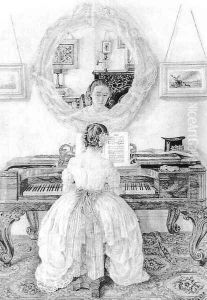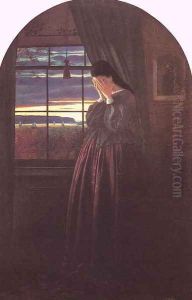Charles Farrer Paintings
Charles Farrer was a 19th-century British artist known for his landscape paintings and botanical illustrations. Born in 1839, Farrer was part of the Victorian era's burgeoning art scene, though he did not achieve widespread fame during his lifetime. His work often reflects the Victorian fascination with nature and the meticulous observation of flora and fauna.
Farrer's artistic journey was influenced by the Pre-Raphaelite Brotherhood, a group of English painters, poets, and critics founded in 1848. While not a member of the Brotherhood, his approach to painting shows the influence of their principles, such as a high level of detail, vibrant colors, and an emphasis on naturalism. He shared their interest in depicting nature with precision and strived to capture the beauty of the English countryside in his landscapes.
Despite his dedication to art and the quality of his work, Charles Farrer remained relatively obscure in the art world, with limited commercial success during his lifetime. He exhibited at the Royal Academy and other venues, but his work was often overshadowed by that of his more famous contemporaries.
Farrer's paintings have been appreciated more posthumously, with art historians and collectors taking an interest in the quiet beauty and technical skill evident in his landscapes. His contributions to botanical illustration have also been noted for their scientific accuracy and artistic finesse.
Charles Farrer died in 1891, having spent much of his life devoted to capturing the intricacies of the natural world. Although he did not gain significant recognition during his lifetime, his work stands as a testament to the Victorian era's artistic endeavors and has slowly garnered more appreciation in the years following his death.


